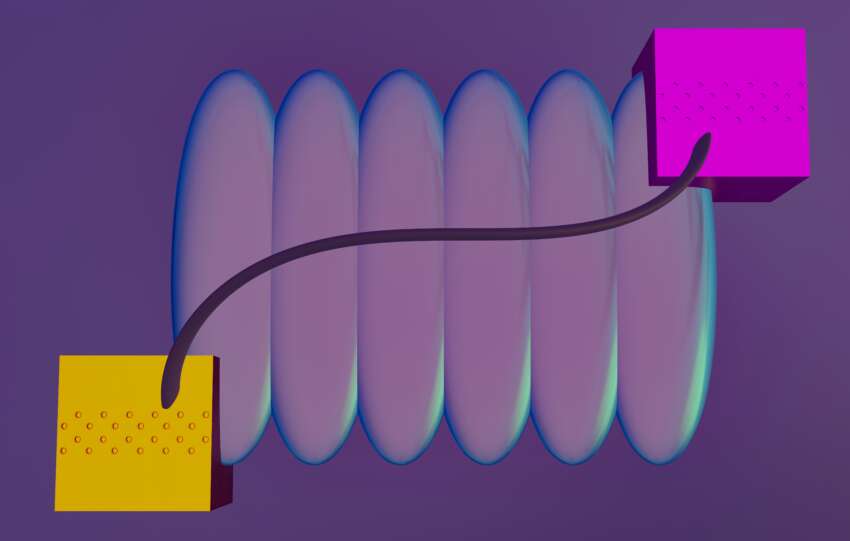Remember the sprawling, multi-stage marketing funnels we meticulously mapped out just a few years ago? The ones designed to capture *everyone* at the top and gently nudge them down through awareness, interest, consideration, and finally, conversion? While the foundational principles remain relevant, the monolithic, one-size-fits-all digital funnel is rapidly becoming a relic. Consumer behaviour has fragmented, attention spans have plummeted, personalization expectations have soared, and the digital landscape itself is more complex and privacy-conscious than ever. Enter the era of the micro-funnel – a leaner, meaner, and far more effective approach poised to dominate digital marketing strategies in 2025. Forget casting a wide net; the future is about precision-engineered pathways designed for specific outcomes and hyper-targeted audience segments. If you haven’t started thinking small, you’re already falling behind.
The Fading Glory of the Macro-Funnel
For years, the traditional marketing funnel (often depicted as ToFu, MoFu, BoFu – Top, Middle, Bottom of Funnel) served as the bedrock of digital strategy. It provided a logical framework for understanding the customer journey and aligning content and tactics accordingly. However, its broad-stroke approach faces significant challenges in the current climate:
- High Drop-off Rates: Long, complex funnels inevitably leak. Users get distracted, lose interest, or find the journey irrelevant to their immediate needs at numerous points. The longer the path, the more opportunities for exit.
- Personalization Paradox: While designed to nurture leads, macro-funnels often struggle with true personalization at scale. Catering content to diverse needs across broad stages becomes generic, failing to resonate deeply with specific user intent.
- Measurement Complexity: Attributing conversions and understanding user behaviour across a lengthy, multi-touchpoint journey is notoriously difficult. Data gets siloed, tracking breaks, and identifying optimization opportunities becomes a Herculean task.
- Lack of Agility: Building and optimizing a full-scale macro-funnel is a significant undertaking. Adapting quickly to market changes, new platform features, or shifting consumer behaviour is cumbersome and slow.
- Rising Acquisition Costs: Driving traffic into the wide top of a leaky funnel is increasingly expensive. Optimizing for efficiency requires a more focused approach to conversion.
The reality of digital funnels 2025 is that users rarely follow a neat, linear path. They jump between channels, conduct independent research, and expect immediate value. The macro-funnel model often fails to reflect this fragmented, non-linear reality, leading to wasted resources and missed opportunities.
Defining the Micro-Funnel: Precision in Action
So, what exactly are these micro-funnels taking center stage? Think of them as highly specialized, short-path conversion tools. Unlike their macro counterparts aiming for broad engagement, micro-funnels are laser-focused on achieving one specific, measurable action from a clearly defined audience segment.
Key characteristics include:
- Singular Objective: Each micro-funnel has one clear goal (e.g., download an ebook, sign up for a webinar, request a demo, purchase a specific product, join an email list segment).
- Targeted Audience Segment: It’s designed for a niche group with specific pain points, interests, or behaviours, not the entire potential market.
- Short, Direct Path: Typically involves only a few steps (e.g., Ad -> Landing Page -> Thank You Page; Email -> Sales Page -> Checkout). Friction is minimized.
- Hyper-Relevant Content/Offer: The messaging, visuals, and offer are precisely tailored to the specific audience and the singular objective.
- Context-Specific: Often designed for a particular channel or traffic source (e.g., a micro-funnel specifically for LinkedIn traffic vs. one for Google Ads traffic).
Examples of Micro-Funnels:
- Lead Magnet Funnel: Ad promoting a specific checklist -> Landing page with opt-in form for the checklist -> Thank you page with download link & next step (e.g., book a call).
- Webinar Registration Funnel: Social media post about a webinar -> Registration page -> Confirmation page -> Reminder emails.
- Flash Sale Funnel: Email announcing a limited-time discount on Product X -> Product X sales page -> Checkout.
- Free Trial Funnel (SaaS): Google Ad targeting “best CRM for small business” -> Landing page highlighting relevant features & offering a free trial -> Simple sign-up form -> Onboarding sequence.
- Event RSVP Funnel: Targeted Facebook ad for a local workshop -> Eventbrite page or dedicated landing page with RSVP -> Confirmation email.
The power lies in their focus. By isolating a specific goal and audience, micro-funnels allow for unprecedented optimization and efficiency.
Why 2025 Is the Breakout Year for Micro-Funnels
Several converging trends make 2025 the tipping point for micro-funnel adoption. It’s not just a novel tactic; it’s becoming a strategic necessity.
1. The Insatiable Demand for Hyper-Personalization
Consumers today don’t just appreciate personalization; they expect it. Generic messaging falls flat. Micro-funnels are inherently designed for personalization. By targeting a specific segment with a specific need, you can craft messaging, offers, and experiences that resonate deeply. An ad, landing page, and follow-up sequence designed *only* for marketing managers interested in AI tools will inevitably perform better than a generic campaign aimed at all business professionals.
2. Skyrocketing Conversion Rates
Focus breeds results. When every element of a short funnel – the ad copy, the landing page headline, the call-to-action, the offer itself – is perfectly aligned with a single goal and a specific user intent, conversion rates naturally increase. Reducing the number of steps minimizes friction and decision fatigue. Users understand exactly what’s being offered and what they need to do, making the “yes” decision much easier. This focus is crucial for optimizing digital funnels 2025 performance.
3. Superior Data and Actionable Insights
Measuring the performance of a micro-funnel is significantly simpler and more insightful than analyzing a sprawling macro-funnel. With fewer variables and touchpoints, it’s easier to pinpoint bottlenecks, understand what’s working (and what’s not), and attribute conversions accurately. A/B testing becomes more focused and impactful. You can test variations of a single landing page or ad creative within a specific micro-funnel and get clear data on what drives the desired action for that particular segment and goal.
4. Unmatched Agility and Speed to Market
Need to launch a campaign for a new feature? Promote a seasonal offer? Target a newly identified niche? Building a micro-funnel is exponentially faster than overhauling a macro-funnel. This agility allows marketers to respond rapidly to market opportunities, test new ideas quickly, and iterate based on performance data without committing vast resources. In the fast-paced digital world of 2025, speed is a competitive advantage.
5. Navigating the Privacy-First Landscape
With the demise of third-party cookies and increasing privacy regulations (like GDPR, CCPA, and others), broad, tracking-heavy macro-funnels face headwinds. Micro-funnels often rely more on contextual targeting, first-party data (collected directly via opt-ins within the funnel), and clearly defined consent for specific purposes. Their focused nature aligns better with a privacy-conscious approach, building trust by being transparent about the value exchange for a user’s data within that specific context.
6. Optimizing for Platform-Specific Journeys
User behaviour differs significantly across platforms. Someone scrolling Instagram responds differently than someone actively searching on Google or Browse LinkedIn. Micro-funnels allow you to tailor the experience to the platform context. For example, a lead generation micro-funnel starting from a Facebook Lead Ad (where the form is pre-filled) requires a different follow-up than one starting from a high-intent Google Search Ad leading to a detailed landing page.
7. Catering to Shrinking Attention Spans
Let’s face it: attention is the scarcest resource online. Users are bombarded with information and have little patience for long, meandering journeys. Micro-funnels respect this reality by delivering value and getting to the point quickly. A clear promise, a concise path, and an immediate payoff (like a downloadable guide or a webinar seat) are far more effective in capturing and converting fleeting attention.
Constructing High-Performance Micro-Funnels for 2025
Building effective micro-funnels requires a shift in mindset from breadth to depth. It’s about surgical precision rather than carpet bombing. Here’s a practical framework:
Step 1: Nail the Singular Objective
What is the *one* specific action you want a user to take? Be ruthlessly specific. “Generate leads” is too broad. “Get qualified leads to download our ‘Ultimate Guide to SEO for E-commerce'” is better. “Drive registrations for our May 15th webinar on AI in Content Marketing” is even more specific. This objective dictates every subsequent decision.
Step 2: Define Your Micro-Segment
Who, *exactly*, is this funnel for? Move beyond broad personas. Define the segment by specific demographics, psychographics, pain points, online behaviour, job titles, or expressed interests relevant to your objective. Example: Instead of “small business owners,” target “UK-based Etsy sellers struggling with product photography.” The tighter the segment, the more relevant your funnel can be.
Step 3: Map the Minimal Viable Journey
What are the absolute essential steps to get from entry point to conversion? Keep it lean. Typically:
- Traffic Source: Where does the journey begin (e.g., specific ad, email link, social post)?
- Landing Page/Entry Point: A dedicated page focused solely on the objective and offer.
- Conversion Mechanism: The form, button, or checkout process. Make it seamless.
- Thank You/Confirmation Page: Deliver the promised value and potentially guide the next step (but resist creating another complex funnel here).
- (Optional) Follow-up: A short, targeted email sequence relevant to the specific action taken.
Step 4: Craft Laser-Focused Content and Offer
Every word, image, and element must align with the singular objective and the micro-segment. Does the ad copy directly address the segment’s pain point? Does the landing page headline instantly confirm the user is in the right place? Is the call-to-action crystal clear? Is the offer itself highly desirable *to this specific audience*?
Step 5: Select the Right Tech Stack
You don’t necessarily need complex, enterprise-level software. Key tools include:
- Landing Page Builder: Tools like Leadpages, Instapage, Unbounce, or even built-in features of your CRM/ESP allow for quick creation and testing.
- CRM/Email Marketing Platform: To capture leads, segment audiences, and deliver automated follow-ups (e.g., HubSpot, ActiveCampaign, Mailchimp).
- Analytics: Google Analytics 4 (for event-based tracking), platform-specific analytics (Google Ads, Meta Ads), and potentially heatmapping/session recording tools (like Hotjar or Clarity) for landing page optimization.
- Advertising Platforms: Google Ads, Meta Ads, LinkedIn Ads, etc., depending on where your micro-segment hangs out.
Step 6: Implement Granular Tracking
Clean data is crucial. Use UTM parameters consistently on all entry links. Set up specific conversion goals/events in your analytics platform for the micro-funnel’s objective. Track not just the final conversion, but key steps within the funnel (e.g., landing page views, form submissions attempts vs. completions) to identify drop-off points.
Step 7: Relentlessly Test and Optimize
The beauty of micro-funnels is their testability. A/B test everything: headlines, button copy, imagery, form length, ad creatives, targeting parameters. Small tweaks within a focused funnel can yield significant improvements in conversion rates. Monitor performance closely and iterate constantly.
Micro vs. Macro: A Symbiotic Future for Digital Funnels 2025?
Does the rise of the micro-funnel signal the complete death of the macro-funnel? Not necessarily. While stand-alone micro-funnels will proliferate for specific campaigns and objectives, they can also function *within* a broader customer journey framework.
Think of the macro-funnel (or flywheel, or customer journey map – whatever model you prefer) as the overarching strategic guide. Micro-funnels then become the high-performance engines that drive users through specific transitions or achieve targeted outcomes *within* that larger journey. For instance:
- An awareness-stage blog post (part of the macro view) might include a CTA leading to a micro-funnel for downloading a related checklist.
- A prospect nurtured through general email marketing (macro) might receive an invitation to a highly specific webinar, entering a dedicated registration micro-funnel.
- An e-commerce site (macro journey) might deploy micro-funnels for abandoned cart recovery or promoting cross-sells on specific product pages.
The key is that the micro-funnel offers a moment of intense focus and optimization for a critical action. It streamlines key conversion points that often cause friction in a broader, less targeted approach. The future of digital funnels 2025 likely involves a constellation of specialized micro-funnels orbiting around, and supporting, broader strategic goals.
“The shift towards micro-funnels reflects a deeper understanding of user intent and the need for relevance at every touchpoint. It’s about meeting the customer exactly where they are, with exactly what they need, at that precise moment.”
— A Hypothetical Digital Strategy Analyst
Potential Challenges and How to Mitigate Them
While powerful, scaling a micro-funnel strategy isn’t without potential hurdles:
- Management Complexity: Juggling dozens or hundreds of micro-funnels can become overwhelming. Mitigation: Implement robust naming conventions, use project management tools, establish clear ownership, and leverage templates and automation where possible. Focus on the highest-impact opportunities first.
- Maintaining Brand Consistency: Ensuring consistent messaging, tone, and visual identity across numerous focused funnels requires discipline. Mitigation: Develop clear brand guidelines specific to funnel components, create reusable asset libraries, and implement quality assurance checks.
- Resource Allocation: Creating unique content and managing campaigns for multiple micro-funnels requires time and potentially budget. Mitigation: Prioritize based on potential ROI. Repurpose content elements where appropriate (without sacrificing relevance). Start small, prove the concept, and scale gradually. Leverage efficient tools.
- Connecting the Dots: Ensuring micro-funnels contribute to larger business goals and understanding their cumulative impact requires careful tracking and reporting. Mitigation: Align micro-funnel objectives with overarching KPIs. Use sophisticated analytics and potentially a Customer Data Platform (CDP) to stitch together user journeys across different funnels where appropriate and permitted.
The Takeaway: Embrace Focus for 2025 Success
The evolution towards micro-funnels isn’t just a trend; it’s a fundamental shift in how effective digital marketing gets done. The spray-and-pray approach of the oversized macro-funnel is losing ground to the precision, personalization, and performance of focused, objective-driven pathways.
As we navigate the complexities of digital funnels 2025 – characterized by heightened user expectations, privacy constraints, and intense competition for attention – the ability to create lean, targeted, and high-converting micro-experiences will separate the leaders from the laggards. They offer:
- Unparalleled personalization opportunities.
- Significantly higher conversion potential.
- Clearer, more actionable data.
- Greater strategic agility and speed.
- Better alignment with privacy best practices.
The challenge for marketers, business owners, and digital strategists is clear: start identifying opportunities within your current strategy where a micro-funnel could streamline a key action or engage a specific audience segment more effectively. Begin experimenting, measure meticulously, and refine your approach. Don’t wait for the monolithic funnels of the past to crumble completely. Start building the focused, efficient, and results-driven micro-funnels that will define success in 2025 and beyond.
Ready to Build Your First Micro-Funnel?
Analyze your current customer journey. Where are the biggest drop-offs? What single action, if optimized, could significantly impact your bottom line? That’s your starting point. Embrace the power of focus, and make 2025 the year you master the micro-funnel.




